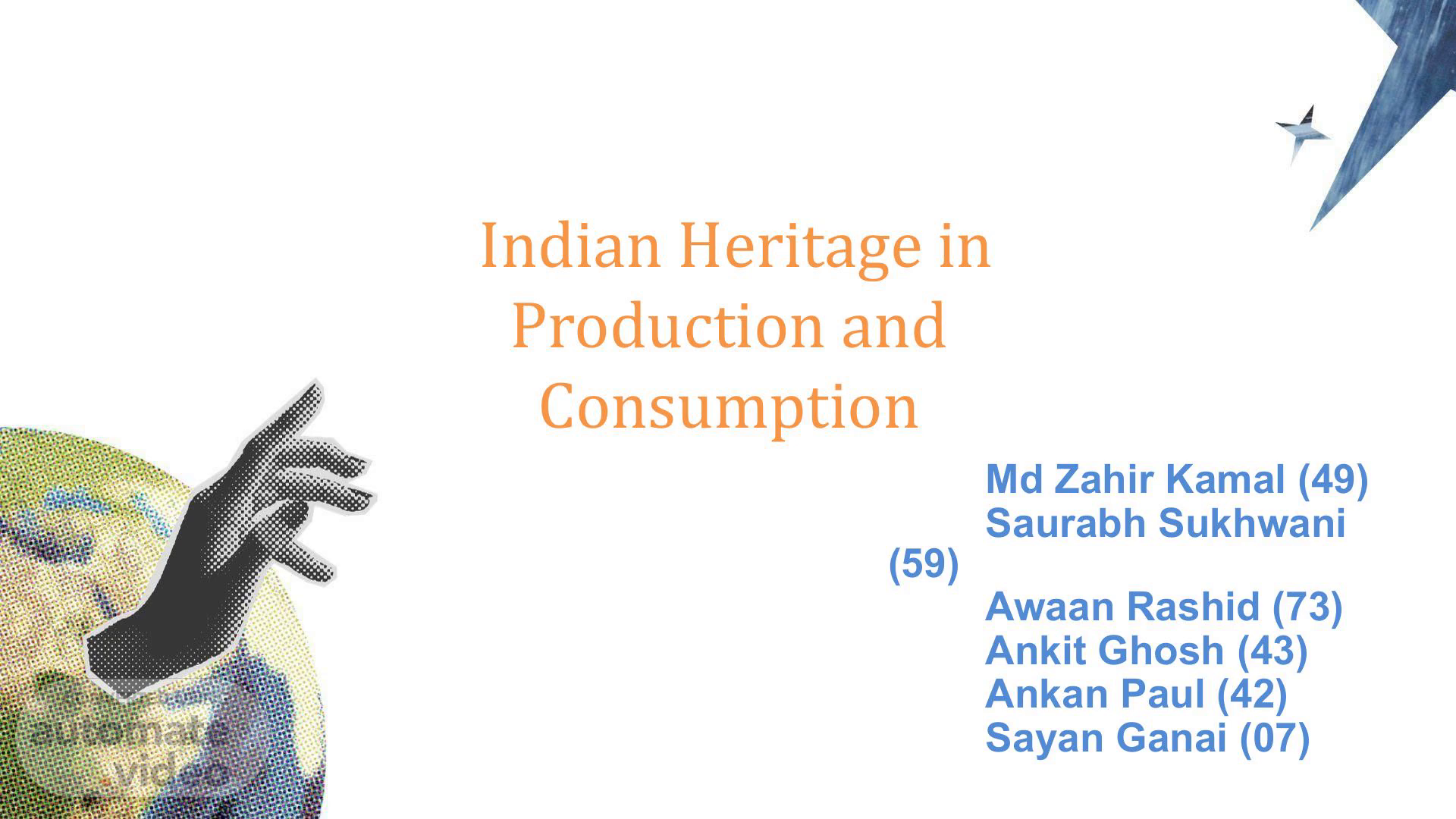
Page 1 (0s)
[Audio] Welcome everyone! Today, we will be discussing the Indian heritage, and how the nation has evolved over the years. We shall explore the major cultural influences, ancient empires, independence, and the economic legacy of the First Five-Year Plan. Let us begin by taking a look at India's production and consumption..
Page 2 (24s)
[Audio] India has long been known for its rich heritage and culture, from ancient times to the present. It has made enormous contributions to the world in both production and consumption. Traditional industries such as textiles, handcrafts, jewellery, pottery and more have developed over time in India, and recently it has also made great strides in modern industries like IT, engineering, and automobiles. In terms of consumption, India is a major player, with a large consumer population spread across the country. It is also known to be a leading location for international and domestic tourism. All these aspects have enabled India to be a major influence in the global sphere. This presentation will look at Indian heritage in production and consumption, the changes and challenges that have taken place recently, and how India is being felt on the global stage..
Page 3 (1m 21s)
[Audio] India's Heritage is an intricate and multifaceted concept. We will delve into production and consumption in India to gain insight into how its history and culture have had an effect on its economy and social conventions. Through this presentation, we will gain a better understanding of how India has developed through its diverse range of monuments, music and more. We anticipate taking a journey through the beauty of the Indian Heritage with all of you..
Page 4 (2m 2s)
[Audio] India has a heritage that is as varied as its citizens, with a variety of old civilizations influencing and impacting the culture in the course of centuries. Starting from the developed Indus Valley Civilization up to the Mauryas, Guptas, Mughals and modern India, our history is abundant with powerful empires and remarkable events. These events have left a lasting impression on our society, ranging from the infrastructure and architecture to the customs and literature. When India earned its independence in 1947, it adopted the mixed economy structure which laid the groundwork for the first Five-Year Plan and planned economic development. This was a vital moment in India's progress towards becoming a more evolved and well-off nation..
Page 5 (2m 48s)
[Audio] India's cultural and artistic heritage is a treasure trove, and this is especially reflected in its production methods. Ancient civilizations developed sophisticated techniques of metallurgy and pottery, which can still be seen in artifacts today. In terms of textile production, India has a great reputation, with cities such as Varanasi, Banaras, and Kanchipuram being particularly famous for their silk production. This long and wealthy history of production is a clear sign of India's rich cultural tradition..
Page 6 (3m 21s)
[Audio] India's heritage has produced an eclectic mix of practices and traditions, with particular emphasis on the consumption aspect. Its flavorful cuisines, regional specialties and cooking techniques are renowned, while traditional clothing and textiles also have their own unique styles steeped in cultural roots. Making up a vibrant part of India's consumption legacy are the various festivals and celebrations that give the country's cultural tapestry an extra layer of colour..
Page 7 (3m 50s)
[Audio] India has long been renowned for its creative and innovative approach to art, culture and technology. From intricately carved temples to a rich and vibrant cuisine, India has a reputation for creating original works of art which are admired worldwide. As technology has evolved, so has India's capacity to stay at the forefront of development, and it now stands on the global stage as a leader in fields such as software and IT. India's cultural heritage, from its literature to its architecture, has been shaped and nurtured over many generations and it has made significant efforts to use technology to protect and share its culture..
Page 8 (4m 30s)
[Audio] India's production and consumption patterns have been formed by a multitude of influences throughout its history - from colonial and globalizing forces to more contemporary urbanization trends. These have left a significant impression. But in the present days, the younger generation has developed a heightened awareness of the nation's customs and culture, resulting in projects that promote the conservation of traditional production and consumption procedures, giving everyone a chance to experience the India of the past. With a deep knowledge of India's history in production and consumption, it is possible to create a better and more meaningful future..
Page 9 (5m 8s)
[Audio] Indian heritage in production and consumption goes far beyond ancient temples and exquisite textiles, incorporating crafts and traditional knowledge for the creation and consumption of objects which has been passed down through generations. This has enabled India to develop distinct and enduring products that have made a mark on the world stage, and which reflect the country's diversity and strength. Therefore, it is essential to safeguard and treasure this heritage..
Page 10 (5m 40s)
Thank You.